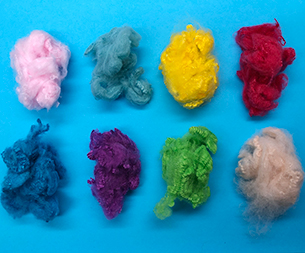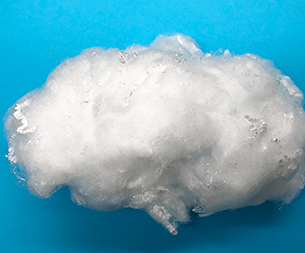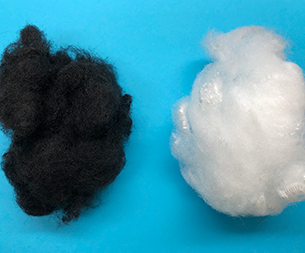Polyester staple fiber (hereinafter referred to as staple fiber) is a staple fiber obtained by spinning, drawing, and cutting polyester (PET) produced by polymerizing PTA and ethylene glycol in a molten state. Since entering my country in the 1970s, due to its wide range of uses and low prices, the market scale has developed rapidly, and it has become an important raw material for textile, clothing, home textiles and other industries.
Raw materials and technology
According to different classification standards, staple fiber can be divided into different categories. According to raw materials, it can be divided into primary staple fiber and regenerated staple fiber. Primary staple fiber is made from PTA and ethylene glycol through polymerization, spinning, and cutting. It is commonly known as "large chemical fiber"; recycled staple fiber is mainly made of recycled PET bottles as raw materials, and is dried, melted, and spun. It is made by cutting silk, commonly known as "small chemical fiber".
Primary staple fiber is divided into melt direct spinning and intermittent spinning according to different spinning production processes. Melt direct-spun staple fiber is made of PTA and ethylene glycol as raw materials. After the polyester melt is produced, it is directly spun and cut to produce staple fiber without the process of producing polyester chips. At present, the production of conventional domestic staple fibers basically uses melt direct spinning technology. Intermittent spinning, also known as chip spinning, is a process of producing fibers from PET chips. Compared with the melt direct spinning process, batch spinning reduces the polyester equipment and adds the chip drying and melting equipment, and the subsequent processes are basically the same.
Downstream applications
Staple fibers are mainly divided into three categories according to different uses: for spinning, filling, and non-woven. Spinning yarn is the main purpose of staple fiber, including cotton spinning and wool spinning. Cotton spinning and wool spinning refer to spinning with cotton and wool fibers respectively. The amount of cotton spinning is relatively large, mainly including pure polyester spinning, polyester-cotton blended spinning, polyester-viscose blended spinning and the production of polyester staple fiber sewing thread. Wool spinning mainly includes polyester/acrylonitrile, polyester/wool blending and making blankets.
Filling is mainly staple fiber in the form of fillings, used as home furnishing fillings and clothing warming materials, such as bedding, cotton clothing, sofa furniture, plush toys, etc. Most of these staple fibers are hollow polyester staple fibers. Nonwovens are an extension of staple fiber use and have developed rapidly in recent years. Non-woven fabrics are widely used. For example, spunlace non-woven fabrics are mainly used in wet wipes, medical and other fields, and geotextiles, leather-based fabrics, and linoleum-based fabrics are mainly used in engineering fields.
At present, the largest proportion in the market is polyester staple fiber products for primary spinning.
- Polypropylene staple fiber is wi
- How to better exert the power of
- The characteristics of all aspec
- Internet technology changes cons
- Polypropylene staple fiber proce
- The traditional peak season has
- The performance advantages of Hy
- Operation analysis of China's in
- What factors are Polypropylene s
- From January to August this year
- Markets
- Automotive Products
- Nonwoven Lining
- Geosynthetics
- Liquid Filtration
- Apparel and Textiles
- Hygiene Products
- Building and Construction
- Other Markets
- Contact Us
- Contact Haibang





